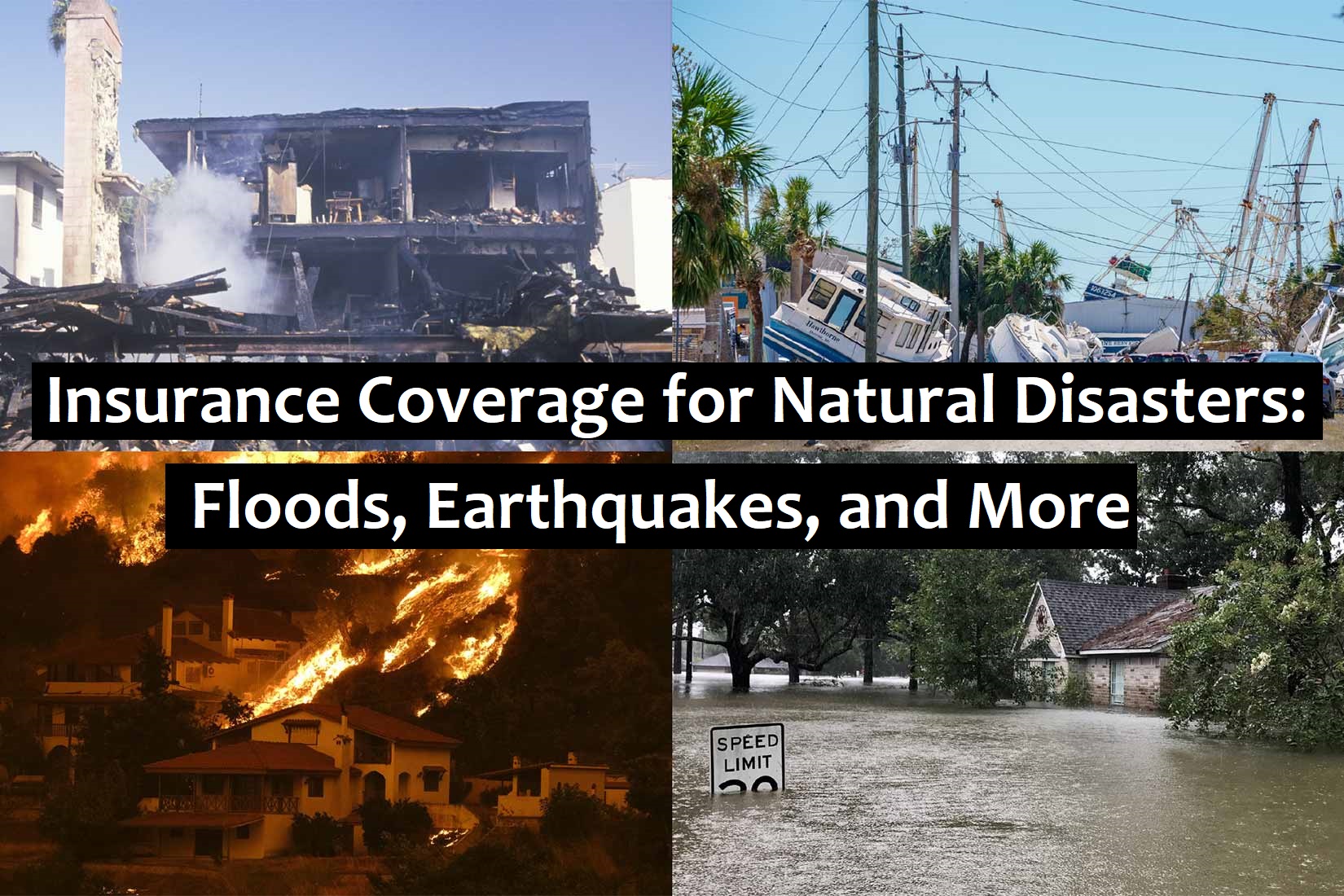Natural disasters can strike unexpectedly, leaving a trail of destruction that disrupts lives and causes significant financial loss. From hurricanes and floods to wildfires and earthquakes, these events can devastate homes and communities. That’s where home insurance plays a critical role—offering homeowners a financial safety net to recover and rebuild.
But are you truly covered when disaster hits? Understanding what your home insurance policy includes and excludes is essential in ensuring you’re adequately protected. In this comprehensive guide, we’ll explore how natural disasters impact home insurance, what standard policies cover, and what additional steps you may need to take.
Understanding Home Insurance Basics
Home insurance, also known as homeowners insurance, provides coverage for damage or loss to a home and its contents. It typically includes:
- Dwelling coverage – Protection for the structure of your home.
- Other structures coverage – Covers garages, sheds, fences, etc.
- Personal property coverage – Insures furniture, electronics, clothing, and other belongings.
- Liability protection – Provides coverage if someone is injured on your property.
- Loss of use coverage – Pays for temporary living expenses if your home becomes uninhabitable.
While these components form the core of most policies, coverage for natural disasters can be more complex.

Common Natural Disasters and Standard Coverage
Let’s break down how different natural disasters interact with typical home insurance policies.
1. Hurricanes
- Covered? Yes, in most cases, damage from wind is covered.
- Not Covered? Flood damage, even if caused by a hurricane, is not included.
- Special Considerations: In hurricane-prone areas, insurers may include a separate hurricane or windstorm deductible, which is usually a percentage of the home’s value.
2. Floods
- Covered? No, standard home insurance does not cover flood damage.
- Solution: Purchase a separate flood insurance policy through the National Flood Insurance Program (NFIP) or a private insurer.
- Why Important: Just one inch of water can cause thousands of dollars in damage.
3. Earthquakes
- Covered? Typically not.
- Solution: Earthquake insurance can be added as an endorsement or purchased as a separate policy.
- Note: Earthquake insurance often includes high deductibles and limits on coverage.
4. Wildfires
- Covered? Yes, most standard policies cover wildfire damage.
- Check for: Adequate dwelling and personal property limits, especially in high-risk areas.
5. Tornadoes
- Covered? Yes, wind damage from tornadoes is generally covered.
- Be Aware: Like hurricanes, high wind deductibles may apply.
6. Hailstorms
- Covered? Yes, standard policies usually cover hail damage.
- Exceptions: Cosmetic damage may be excluded, especially for roofing materials.
7. Landslides and Mudslides
- Covered? No. These are considered earth movements, which are excluded from standard policies.
- Solution: Purchase a separate policy, often from a surplus lines insurer.
Key Policy Components to Review
To ensure you’re protected against natural disasters, evaluate the following elements of your home insurance policy:
- Coverage Limits – Make sure the limits on your dwelling and personal property coverage reflect current rebuilding and replacement costs.
- Deductibles – Understand standard and disaster-specific deductibles. These can vary significantly based on the location and the type of peril.
- Exclusions – Review what is not covered, especially in disaster-prone regions.
- Endorsements and Riders – Consider additional coverage options for excluded perils.
Supplemental Insurance You May Need
To achieve full protection, consider adding the following supplemental policies:
- Flood Insurance: Available through the NFIP and private insurers. Required in high-risk flood zones.
- Earthquake Insurance: Available as an endorsement or standalone policy. Particularly important in seismic zones.
- Sewer Backup Coverage: Useful if storms or floods lead to sewer system overflows.
- Ordinance or Law Coverage: Helps pay for rebuilding to current building codes after damage.
Steps to Ensure Adequate Coverage
- Conduct a Home Inventory
- Document all personal belongings with photos or video.
- Keep receipts and appraisals for high-value items.
- Review and Update Your Policy Annually
- Adjust your coverage to reflect home upgrades or increased building costs.
- Understand Your Risk Zone
- Use FEMA and local zoning maps to determine risk for floods, earthquakes, or wildfires.
- Work with a Reputable Insurance Agent
- An experienced agent can help identify coverage gaps and recommend the best options.
After a Natural Disaster: Filing a Claim
In the unfortunate event that your home is affected by a natural disaster, follow these steps to file a claim efficiently:
- Ensure Safety First – Evacuate if needed and return only when safe.
- Contact Your Insurance Company – Notify them as soon as possible.
- Document the Damage – Take photos and video of all damage.
- Prevent Further Damage – Make temporary repairs to prevent worsening damage, keeping receipts for reimbursement.
- Work with the Adjuster – Cooperate fully with the insurance adjuster and provide all requested documentation.
- Track All Expenses – Keep a detailed log of repair and living expenses.
Tips for Lowering Premiums While Staying Protected
Even with expanded coverage, you can still manage your premiums by:
- Installing smoke detectors and alarm systems
- Reinforcing your roof and windows
- Elevating your home or utilities if in a flood-prone area
- Increasing your deductible (if you can afford it)
- Bundling your home and auto insurance policies
The Impact of Climate Change on Home Insurance
Climate change has increased the frequency and severity of natural disasters, which has, in turn, affected the home insurance industry:
- Rising Premiums: Insurers are adjusting rates to reflect growing risks.
- Coverage Limitations: Some companies are reducing or eliminating coverage in high-risk zones.
- Increased Scrutiny: More rigorous underwriting standards and inspections.
This makes it more important than ever to understand your policy and prepare for the unexpected.
Conclusion
When it comes to natural disasters, preparation is key. While home insurance is designed to protect you from many types of damage, it’s not a one-size-fits-all solution. By knowing what your policy covers—and what it doesn’t—you can make informed decisions and purchase the right coverage to protect your home and financial future.
Don’t wait for disaster to strike. Review your home insurance policy today, assess your risk, and fill in any gaps with supplemental coverage. Doing so can provide peace of mind, knowing that you and your home are protected no matter what Mother Nature brings.
If this article was informative also checkout: Car Insurance Premiums
also check: Click Here



